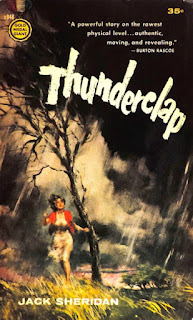Fools Walk In
The novel begins with our narrator Larry Knight picking up a young, stranded woman named Jeanie at a rainy Virginia gas station and giving her a ride. They’re both headed for New York and the girl is sexy, vulnerable and flirty. But what’s in that travel bag she’s carrying?
Larry is a high school English teacher and never married. He’s totally gonna get laid with this enigmatic chick, right? To complicate matters, it seems Jeanie is running from the cops following a recent payroll holdup conducted by her now-dead boyfriend. The loot was never recovered and the cops think Jeanie is running with it. What’s in that bag, again?
The unlikely pair find themselves on a road trip to New Hampshire to a mobster hideaway where Jeanie can get some help with her problems from her dead ex-boyfriend’s heist crew. For unclear reasons, Larry tags along looking for an adventure and hopefully some erotic nights with this sexy young tart.
Together they hatch a pretty stupid plan to have Larry steal the identity of a reclusive California pimp to bolster his credibility with the gangsters at the hideout. It’s dumb and gets dumber. Thereafter, most of the novel involves the love triangles and interpersonal back-and-forths among the characters at the hideout with Larry the high school teacher playing the role of legendary California mobster.
Bruno Fischer is a fantastic author - one of the best from his era - but this novel is a real stinker. It started so promisingly with the erotic meet-cute with a woman-on-the-run, but the central premise of the book requires way too much suspension of disbelief. If you buy the Stark House reprint (and you should!), you can safely skip this one and enjoy So Wicked My Love.
So Wicked My Love
Fischer’s 1954 novel, So Wicked My Love, originally appeared in a condensed form in the November, 1953 issue of Manhunt magazine. Crime-fiction scholars will often point to the novel as among Fischer's best.
When the reader first meets Ray, he's a dejected, emotional wreck laying on Coney Island's sandy beach. His girlfriend Florence rejected his marriage proposal and ring the night before, explaining to Ray that she may still be in love with another man. As Ray ponders his life post-Florence, he spots a woman he once knew walking along the shore. Ray re-introduces himself to a beautiful vixen named Cherry and almost immediately becomes an accomplice in armed robbery and murder. Wicked love, indeed.
After reading a brief newspaper headline about an armed car robbery, a mysterious woman and a band of criminals, Ray's one night out with Cherry proves to be a cornucopia of dark discoveries. He learns that Cherry has a car trunk filled with stolen cash and three violent men on her trail. Ray gives Cherry the engagement ring he bought Florence and the two decide to flee with the money together. But after a deadly, violent encounter with two of the three men, Ray drops the money at an abandoned farm house and anonymously calls the police to pick it up. Ray then reconvenes with Florence and the two become married and live happily ever after. Considering all of these riveting events happen in the book's opening pages, readers quickly sense that Bruno Fischer has an abundance of intrigue, suspense and violence left to explore.
Ray's lusty encounters with Cherry aren't explicit, but they're an enticing invitation for readers to take the journey with these ill-fated lovers. As Ray's average life becomes more complicated, readers can foresee the impending doom in Fisher's narrative. By its very definition, the idea of this average blue-collar man being trapped in a web of murder, robbery and blinding lust is crime-noir in its most rudimentary form. It's also the same ritualistic formula utilized by a mastermind crime-fiction veteran like Fischer to mesmerize readers, fans and literature scholars. From a reader's stance, it makes for a fantastic reading experience.
Bottom Line: So Wicked My Love is so wickedly good. Get this twofer from Stark House HERE.





















